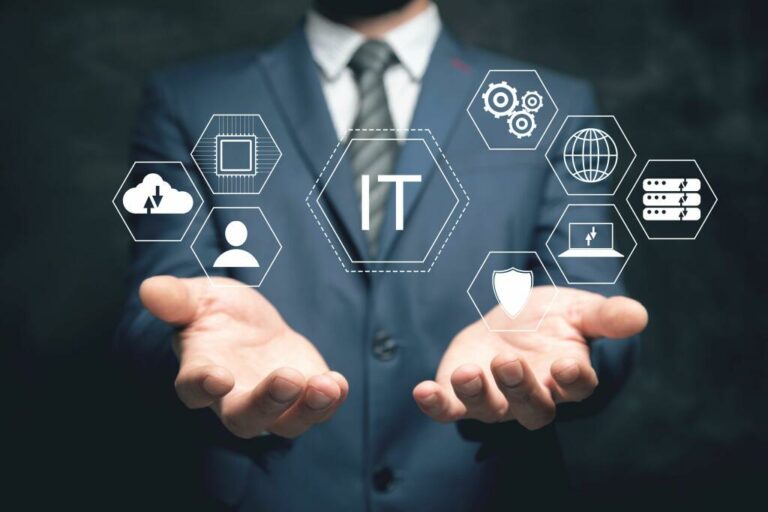Content
An endpoint such as a user’s PC is used in conventional corporate computing. An enterprise application processes the data after it has been what is edge computing with example sent across a WAN, such as the Internet, and stored on the local area network . In these cloud vs edge computing instances, enterprises choose edge computing since smart devices with computational capability are located at the network’s perimeter. Instead of running a hefty stream of data to the centralized data center for storage and computation, an edge computing architecture would have allowed the other IoT devices on the network to store and process a portion of the data locally. The five primary factors driving edge computing are latency, bandwidth, security, connectivity, and AI. Industries like autonomous vehicles, the advent of smarter cities, and powerful connectivity rollouts like 5G – all combined with computing and data processing applications in harsh locations – are driving edge computing adoption.

A great example of edge computing applied to vehicles would be autonomous trucks driving behind one another, with only one driver at the front. This concept is fast becoming a reality, which is only possible because of edge computing. Autonomous vehicles require ultra-fast processing; otherwise, any delay in the vehicle’s maneuvering can be deadly. With data becoming ever crucial in technological and business advances, new ways are being developed to streamline this data processing to decrease costs, increase efficiency, and improve the quality of human life.
What is Remote VPN Access with MFA?
In turn, the cloud server uses this device-generated data to compute the information the driver requested. This lag problem is unacceptable with IoT devices that need to work in real-time. For example, can you imagine if the IoT sensor of a smart car experiences a delay? Factory workers undertake maintenance or replace a component before it fails during regular machine operation, saving businesses money from lost productivity and missed delivery deadlines.
Dell’s vision for Latin America: multicloud, 5G and edge computing – BNamericas English
Dell’s vision for Latin America: multicloud, 5G and edge computing.
Posted: Wed, 09 Nov 2022 19:46:38 GMT [source]
In a typical closed control loop system, sensors act as the initial trigger point for sending events to the backend systems. For example, in a video camera, an optimal model is to send live streams only when there is motion. Capabilities such as motion detection and tripwire detection can eliminate the need to send continuous what is edge computing with example traffic to the cloud for processing until a motion is detected. In most cases, the edge computing capacity is minimal and is used for a very targeted feature integrated into the product. Edge computing provides an unprecedented opportunity for enterprises and service providers to unlock the value in data.
Industrial PC Designs – Fanless Cooling Technology
Typically edge computers that are tasked with performing machine vision are equipped with a performance accelerators for extra processing power. Rugged industrial computers are often deployed in factories and manufacturing facilities for industrial automation and control. Moreover, rugged computers are great because they can consolidate workloads by grouping multiple operations onto a single system, replacing separate purpose-built hardware machines with rugged edge computing devices. For example, in industrial settings, you’ll often find PLCs and HMIs (human-machine interfaces) running fixed function applications.

The amount of data gathered at the network edge has increased in tandem with the Internet of Things expansion. In turn, the necessity to handle that data volume has sped up the development of edge computing use cases. This is something 5G edge computing is designed to solve in the coming years. Currently, network operator EE is investigating the potential for these types of services in collaboration with Wembley Stadium, the national soccer stadium of the UK. This is the most practical solution, as time is of the essence in these critical systems. This allows utilities to more intuitively avoid outages and overcompensation reducing overall costs and energy waste.
Security risks at the edge
On the other hand, processing data on the spot, and then sending valuable data to the center, is a far more efficient solution. An enterprise application processes the data after it has been sent across a WAN, such as the Internet, and stored on the local area network . As the number of IoT devices increases, so, too, will the amount of data that needs to be stored and processed. Contact us today, and let’s explore how you can implement edge computing into your network. Edge computing is undoubtedly a powerful approach that can increase your network’s performance, security, and privacy. Many exciting use cases and possibilities exist with IoT, which can be improved further with edge computing.
Leveraging edge computing offers certain benefits that can’t be achieved by cloud computing, alone. In particular, putting the computing power at the edge helps to reduce latency and provide data processing at the source, not potentially many miles away. Edge computing is a cloud deployment approach that brings enterprises and their applications closer to internet of things devices and necessary servers. Businesses need to quickly turn around large amounts of data, so by placing servers closer to users, edge computing providers can speed up workflows and deliver results faster. Similarly, autonomous vehicles, which operate with low connectivity, need real-time data analysis to navigate roads. Gateways hosted within the vehicle can aggregate data from other vehicles, traffic signals, GPS devices, proximity sensors, onboard control units, and cloud applications, and can process and analyse this information locally.
Premio is proud to live on the front lines of edge computing’s advancement, and we’re committed to helping you find the ideal solution for your unique needs. Edge computing brings powerful benefits, particularly in the form of reduced latency, performance under harsh conditions, and more. As a result, manufacturing organizations can lower the cost of maintenance, improve operational effectiveness of the machines, and realize higher return on assets. AI will further facilitate intelligent decision-making capabilities in real-time, allowing cars to react faster than humans in response to abrupt changes in traffic flows. In computing, time-sharing is the sharing of a computing resource among many users by means of multiprogramming and multi-tasking at the same time.

However, safe work conditions remain a top priority in the industry, and this won’t work without process automation. Automation means that devices would collect and process data at the edge. For remote vital monitoring for seniors—check out the edge computing use case.
Great Companies Need Great People. That’s Where We Come In.
Edge grid computing technologies are enabling utilities with advanced real-time monitoring and analytics capabilities, generating actionable and valuable insights on distributed energy generating resources like renewables. This is something SCADA-based systems could never do, as they were designed well before the renewable and technological boom. The physical advantages from the proximity of edge devices improves real-time data analytics and lowers barriers-of-entry for on-premise hardware used in real-time applications like machine learning and AR/VR. Cloud service providers have used services built for a specific purpose closer to the users to optimize specific functions such as content delivery. Some refer loosely to Content Delivery Networks and caching services as a cloud edge; however, they were not built to host general-purpose workloads. While the initial attempts were focused on caching and content delivery, newer services such as local zones redefine cloud edge.
- The main difference between cloud and edge computing is in the mode of infrastructure.
- With mobile edge computing, vehicles can exchange real-time sensory data, corroborate and improve decisions with less onboard-resources lowering the growing expense of autonomous AI systems.
- Such business-critical applications are hosted on edge compute at the branch to provide low-latency access to users and provide business continuity.
- The browser on your mobile phone or computer (the “client”) needs to connect to this server to get the webpage data and display it on your screen.
Since its location is at the edges of the diagram – its name reflects this fact. Our blogs cover the latest ruggedized computing news and company updates. In addition, the base would cut down on its operational costs by using less bandwidth, as well as reduce the impact of potential security or maintenance-related issues.
Intelligent Transportation Systems
Using edge computing the gigabytes of sensory and special data is analyzed, filtered and compressed before being transmitted on IoT edge Gateways to several systems for further use. This edge processing saves on network expenses, storage and operating costs for traffic management solutions. Adding transmission bandwidth or more processing power could overcome latency issues. Rugged edge computers are deployed as IoT gateways for smart agriculture applications.
Moreover, a 2019 Gartner forecast in emerging technologies found that, in the next five to ten years, AI and analytics will play a prominent role in edge computing. Prior to that, we can expect enterprise data generated and processed outside of a traditional data centre to increase to 75% by 2022, from less than 10% in 2018. Data processing and analysis in edge computing can be done in a small, on-site data centre or, increasingly, in the device itself. In a network, data is typically sent from devices, be that computers, smartphones, or assembly-line robots, back to a central data centre for processing and analysis.
Rather than transmit vast volumes of raw measurement data to a server, some can be processed on-site. Only select data, such as which machines need maintenance https://globalcloudteam.com/ work, are sent back to the server. Devices that are located further away from the server will also introduce some delay, called latency.

Edge devices help alleviate the processing load from the central server and enhance overall security. They can act as gateways that can block malicious attacks from reaching the central server; if a hack occurs, only that part of the edge network is affected, leaving the rest unscathed. The convenience and efficiency that edge computing offers are unparalleled, and both businesses and individuals will soon be adopting this technology as soon as it becomes cost-effective.
Edge computing Benefits
Capacity is another crucial differentiator against many of the other edge computing models. With the ability to host various compute instances such as Graphical Processing Units, the mobile edge provides a scalable edge infrastructure. By processing and filtering many requests right at the mobile edge, the mobile edge can reduce the contention at the backend servers. Bypassing the internet and providing a shorter direct path also influences the consistency of the experience. The wireless service providers provide nationwide service using a very distributed network.
As a result, if a cyberattack were to occur, the damage would be minimized to only a small portion of the subsystems versus all systems. First, they place compute power and analysis closer to where source data is generated instead of in the cloud. Information access is more reliable and less expensive because data transmission costs to and from the cloud are minimized. Cloud computing virtualization allows cloud providers to optimize infrastructure usage. For example, a single hardware server can be divided into several different virtual servers to serve other users.
Analyzing the most impactful machine health metrics can allow organizations to prolong the useful life of manufacturing machines. Edge’s InPrivate browser mode now offers a Strict setting that blocks ad trackers from following you. Plus, you can change the DNS provider for Edge to one that may provide greater security. Contact us today to talk to a representative about your multi-cloud environment. Adding security to vital data with additional encryption, ransomware protection, and replication.
Examples of Edge Computing Solutions in Use Today
Systems are passively cooled via the use of heatsink, transferring heat away from the internal components to the outer enclosure of the system. Examples of edge and cloud computing applications helping power the connectivity our modern world has come to rely on. According to the Gartner Hype Cycle 2017, edge computing is drawing closer to the Peak of Inflated Expectations and will likely reach the Plateau of Productivity in 2-5 years. Considering the ongoing research and developments in AI and 5G connectivity technologies, and the rising demands of smart industrial IoT applications, Edge Computing may reach maturity faster than expected. Toyota predicts that the amount of data transmitted between vehicles and the cloud could reach 10 exabytes per month by the year 2025.
Kiosk Machines
It may be referred to as a distributed IT network architecture that enables mobile computing for data produced locally. Instead of sending the data to cloud data centers, edge computing decentralizes processing power to ensure real-time processing without latency while reducing bandwidth and storage requirements on the network. Edge computing improves data control, reduces costs, delivers faster insights and actions, and delivers more continuous and optimized data processing and storage by processing and storing data closer to its source.
















